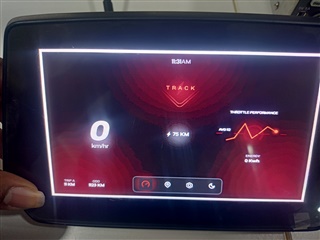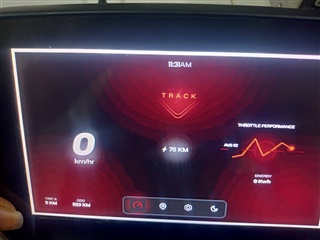Hi Team
We are using the TI's TFP401APZP panelbus ic for our 800x480 display.
everything works fine except colour banding issue.
Is there any possible way to solve the colour banding issue?
The image is added below for your reference


This thread has been locked.
If you have a related question, please click the "Ask a related question" button in the top right corner. The newly created question will be automatically linked to this question.
Hi Team
We are using the TI's TFP401APZP panelbus ic for our 800x480 display.
everything works fine except colour banding issue.
Is there any possible way to solve the colour banding issue?
The image is added below for your reference


Hey Dhanush,
Do you have an example of what the display should look like?
Additionally, can you send the timings for ODCK, DE, HSYNC, VSYNC and the schematic so I can verify that the RGB inputs are connected correctly?
I have attached you all the requirements asked by you.
i think this issue is not becoz of the hardware since everything works fine except this gradient banding.
Firstly i need to know whether this ic can produce 8-bit colour depth output?
please look into this and help me to resolve this issue asap.
Firstly i need to know whether this ic can produce 8-bit colour depth output?
Yes this device is designed to work with 24 bpp with 8-bits per color for each of R, G, and B
Then what would be the cause for this colour banding issue?
Is there something to do with the edid?
Hey Dhanush,
As you know color band is caused by a lack of depth in the color space. The render you sent of what the display should look like was most likely done in a 32-bit color space on your computer which has to be resampled to fit the 24-bit per pixel on the display. Some things you can do to avoid this is design your image in a 24 bit color space to avoid a mismatch between the render and the display image, try to dither the image by adding a gaussian noise filter across the image. This will reduce the impact of the transitions and smooth them out by providing a larger spread of pixel colors at the transition.
However, the best and only real way to avoid color banding is to avoid scenarios in which it is most likely to occur. This means not introducing subtle gradients that take up a lot of the frame is the best way to avoid posterization
I have a doubt,
The external display which i use is a 8 bit RGB display which is exactly the same as our laptop's monitor but less in size(7.1 inches),
Datasheet of my display:
TCXD070AWLMT-209-ARE SPEC 1.6 --only for Amax Technologies 1.pdf
Then why the image is not getting banded in our laptop monitors but getting banded in my external monitor since both have same bit configurations (8bit depth)?
How 32 bit color space image is displayed perfectly in our laptop monitors?
Since our monitor shows the image in perfect gradient then the external display should also show the same right?
Not necessarily as the monitor most likely has postprocessing and some dithering built in.
The TFP401 simply takes the video in and coverts it to RBG format. As we have seen the timings are correct and the video is being displayed properly just with color banding. To double check I recommend trying another image and seeing if the color banding issue persists. Also try using another TFP401 in your design to see if it could be due to the tolerances of the chip you're using.
We are check with the multiple TFP401 and various kind of images, whenever we use another images there is no color banding is there, but particularly that one image having color banding issue. Then, what will be the next move....
The best solution is change the image. This issue has to do with the quantization of color rather than the conversion from TMDS to RGB.
If possible reduce the gradient on the image so it can be quantized easier. You can also add some noise to the image which will smooth out the edges using a gaussian noise filter.